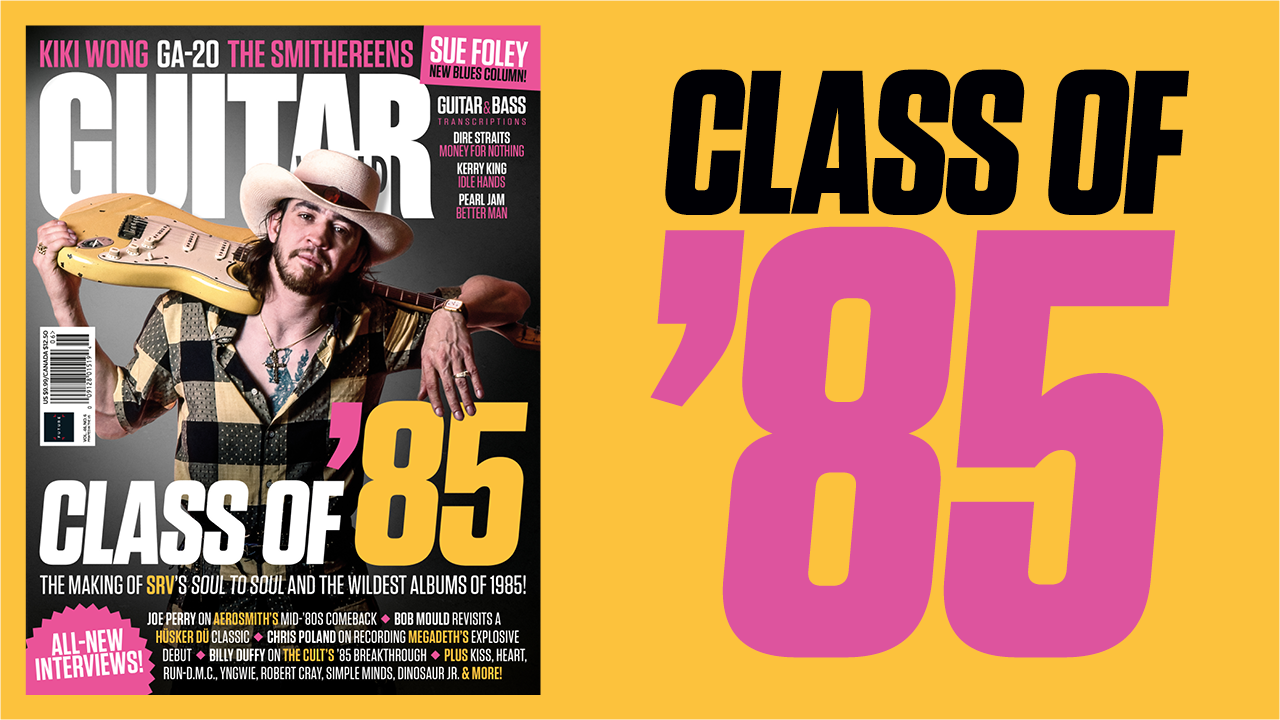“I got made fun of because I walked in proud with an Ibanez Blazer and a solid-state Crate amp”: Gary Clark Jr. says he was mocked at early club gigs for using entry-level shred guitar gear
The guitar hero says he soon learned that shred players were not welcomed at Austin’s esteemed blues venues

Every guitarist has, at some point in their playing career, encountered some form of tonal or technique snobbery, and it seems that the A-listers are no exception: as Gary Clark Jr. explains in his new cover feature for Guitar Player.
The Austin-raised guitar hero famously cut his teeth in the city’s blues clubs. However, he says he also started out with a more shreddy set of influences, but found that the same club scene was far less accepting of that side of his playing, and also his gear.
Asked if shred guitar was frowned upon in the local blues clubs in that early-’00s period, Clark confirms it was indeed a hard sell.
“Oh, sure,” say Clark. “When I was coming up in Austin, you wanted to be part of the cool club. There was this one club that was very strict about what they would allow… [Shredders weren’t welcome]. Not at all.
“I got made fun of because I walked in proud with an Ibanez Blazer and a solid-state Crate amp. I was showing up to blues clubs with that, and they were like, ‘What the hell are you doing?’ But, you know, at a certain point you can’t please everybody.”

It’s quite reassuring to know that even a player of Gary Clark Jr.’s stature and ability faced the same wobbles in finding his feet – and his confidence – that the rest of us have faced over the years.
Needless to say, he’s had the last laugh over the genre puritans and tonal cork sniffers, though – carving out a career that has been distinguished by his chameleonic ability to blend influences and different sonic worlds.
Get The Pick Newsletter
All the latest guitar news, interviews, lessons, reviews, deals and more, direct to your inbox!
What’s more, the guitar hero has since returned to those shred-heavy influences of his youth as he explains elsewhere in his Guitar Player feature.
“When I started on guitar, my friend Eve taught me about the blues and I learned about rock from my friend Gilberto,” says Clark.
“He introduced me to guys like Slash and the whole G3 thing – Steve Vai, Joe Satriani and Eric Johnson. During the pandemic, I was bored and thought, ‘What if I studied that?’ I basically turned into a teenager again. I locked myself in a room and started shredding guitar.”
You can hear the results of that pandemic woodshedding – reportedly practiced, with a sense of karmic redress, on a Floyd Rose-equipped Ibanez – on new album, JPEG RAW, with the likes of recent Editor’s Pick track This is Who We Are showcasing some super-shreddy pentatonic runs in its closing moments.
Nonetheless, Clark says he still doesn’t pay much attention to labels – whether it’s genres, or pedal brands: “I don’t care who makes it,” concludes the guitarist. “I just care what it sounds like.”

Matt is Deputy Editor for GuitarWorld.com. Before that he spent 10 years as a freelance music journalist, interviewing artists for the likes of Total Guitar, Guitarist, Guitar World, MusicRadar, NME.com, DJ Mag and Electronic Sound. In 2020, he launched CreativeMoney.co.uk, which aims to share the ideas that make creative lifestyles more sustainable. He plays guitar, but should not be allowed near your delay pedals.
“My guitar tech ran in and said, ‘Hey, you want to meet Pete?’ I was too scared”: The Smithereens’ love affair with The Who goes way back – yet when guitarist Jim Babjak got the chance to meet Pete Townshend, he turned it down
“Every tour was the best I could have done. It was only after that I would listen to more Grateful Dead and realize I hadn’t come close”: John Mayer and Bob Weir reflect on 10 years of Dead & Company – and why the Sphere forced them to reassess everything










